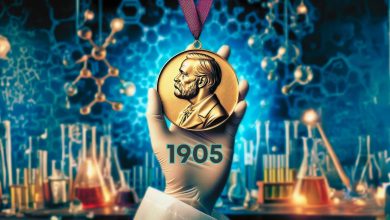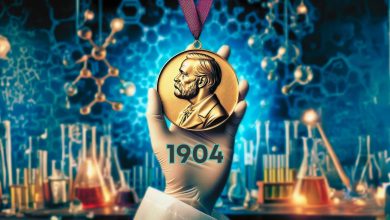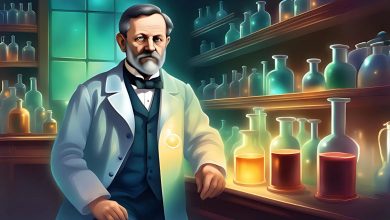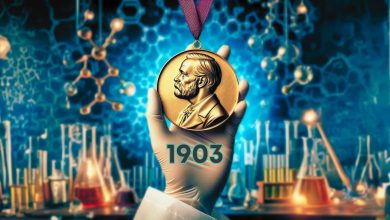
Where Do the Elements Come From?
“The nitrogen in our DNA, the calcium in our teeth, the iron in our blood, the carbon in our apple pies were made in the interiors of collapsing stars. We are made of starstuff .” These words belong to the famous scientist and narrator Carl Sagan. In fact, the elements that make us who we are, come to life during a star’s death cry. We are indeed children of the stars! Let’s rewind the movie and find out where the elements come from!
Preview: Proton, Neutron, and Electron
All of the elements except hydrogen that we see in the periodic table are made up of three fundamental particles called protons, neutrons, and electrons. The smallest element, hydrogen, has only a proton and an electron. Protons and neutrons are located in the middle part of the atom, in the nucleus. We can think of electrons as smaller particles orbiting this nucleus. All these particles make up the atom. On the other hand, elements have different names depending on the number of protons in the atoms. If it consists of only one proton, they have the name hydrogen, if there are two protons, they have the name helium.

So to create a new element, we need to change the number of protons. However, under normal conditions, it is almost impossible to change the number of protons.
Movie Begins: The Big Bang
About 13.8 billion years ago, our universe was formed as a result of a big explosion. During this explosion, more heat was released than we can imagine. Our universe, which is still very hot but slowly starting to cool, formed the first element, hydrogen, hundreds of thousands of years later. The current ambient conditions have become suitable for the coexistence of a proton and an electron. As the universe continues to cool, our sun will rise gradually. The food source of our sun is hydrogen, which is found in almost all of the universe. The hydrogens caught by the gravitational force of the sun are suddenly exposed to very high temperatures. This high temperature is so high that the nuclei of two hydrogen atoms fuse with each other. In this way, a new element, consisting of a proton and two neutrons, come to life: Helium.

The process of fusing these nuclei is called fusion. This fusion process takes place similarly for helium, and heavier elements such as lithium and beryllium begin to form in turn. Until element 26.
Iron Fist Lands on the Sun
Even the extraordinary conditions in the sun are not sufficient to form elements after element 26. Our sun, stunned after being punched by iron, cannot find the energy to create the next elements. So then how do the other elements form?
To create the 27th element, cobalt, by adding a new one to the 26 protons of iron, we need a sad story. There are countless giant stars in our universe, much larger than our sun. These giant stars have a lifetime just like us living things. As they die, they suddenly collapse inward and reach an unbelievable temperature. These explosions, which we can also call supernovas, fuse the protons and neutrons of the iron with new ones and make them bigger. Thanks to these explosions, elements from 26 to 92, that is, from cobalt to uranium, are formed.
Holding the Power of a Supernova in Our Hands
The Man-kind made of stardust has succeeded in taking the power of the stars in his hands in the last century. Thanks to the extremely high temperatures and extraordinarily powerful colliders, we were able to artificially obtain the elements after 92. But the biggest problem of the next elements is that their lifetimes are very short. Especially when we look at the elements after 100 that were discovered recently, we observe that they have extremely short lifetimes. Therefore, the use of these elements and even whether they can be used is still unclear. However, human effort, curiosity, and passion for power do not seem to end. We will see together what awaits us in the coming years.

Is There an End to the Elements?
We learned that elements after 92 can also be produced in laboratory environments with colliders. In 1997 we were aware of the existence of only 107 elements. As of 2021, there are 118 elements in the periodic table. The discovery of 11 new elements in such a short time may have raised the question: Is there an end to the elements?
Although it seems very logical in theory to create an infinite number of elements by combining them with a new proton each time, there is a limit to this. Let’s leave aside the problems that the newly formed elements are extremely radioactive and short-lived. Suppose everything went well and we continue to discover new elements. This time a rather complex constant comes into play that will limit us: the Fine Structure Constant or Sommerfeld Constant.

This constant, which is not yet fully understood, tells us that the maximum number of protons that can be found in an atom is 137. Beyond 137 protons, the inner electrons appear to travel faster than the speed of light, which is not possible according to Einstein’s theory of relativity. In other words, it is thought that the last element we can theoretically obtain in the periodic table will be element 137. We will discuss this constant, which Richard Feynman calls “one of the greatest damn mysteries of physics” in another article.
References and Further Readings
Futurism. (2016, January 30). Where Do All the Elements Come From? Futurism. https://futurism.com/where-do-all-the-elements-come-from.
Kean, S. (2011). The disappearing spoon and other true tales of madness, love, and the history of the world from the periodic table of the elements. London: Black Swan.
NASA. (n.d.). Where Your Elements Came From. NASA.
https://science.nasa.gov/where-your-elements-came.
Images not cited are used through Canva Pro with a royalty payment.
The proofreading has been done by Asu Pelin Akköse and Mete Esencan.
Would you like to support us?
- For more detailed information, you can check our “Support Us!” page!







